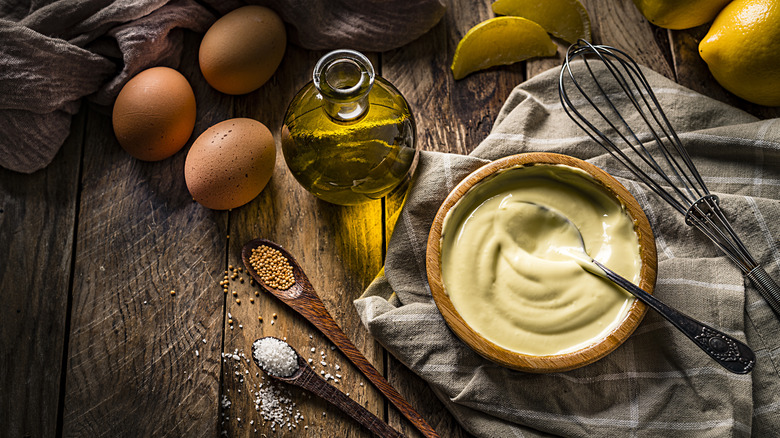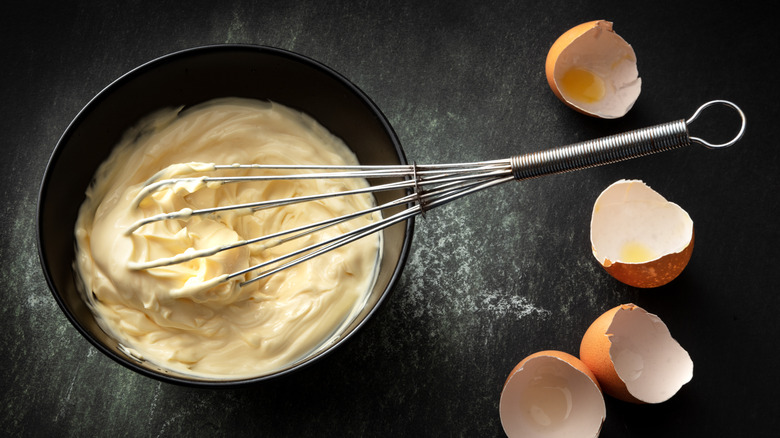The Best Time To Add Lemon Juice When Making Homemade Mayo
Sure, you can buy your mayonnaise from the grocery. But since you're reading Tasting Table you already know (or are open to the idea) that anything made at home is often superior to the store-bought variety. This is especially true of mayo, a simple emulsion that is a cinch to make at home (unless you're really into commercially added preservatives and stabilizers like sodium benzoate and sorbates — in which case, you do you). There are only a couple of tricks to making mayonnaise at home (try our recipe first!), and one important trick is knowing the right time to add the acid — in this case, lemon juice and a bit of vinegar. The answer is after the eggs, salt, and dry mustard have been whisked (or processed) until smooth, but before the slow addition of oil.
Classic mayonnaise, while simple to make, is not a throw-and-go recipe. If you don't do things the right way, in the right order, you won't get an emulsion; you'll get a yucky blend of raw eggs, citric acid, and oil. It's important to incorporate the acid before the oil, as this creates what's known as the "acidic base." Keeping this in mind while making mayonnaise, magic will happen and you'll be rewarded with that luscious, thick sauce that's not only beautiful on its own but is the basis of all manner of variations and dressings. Let's talk about that (literally) transformative process known as emulsion.
Mixing the immiscible
Mayonnaise was invented by accident in 1756 by a French chef who was planning a feast to celebrate the Duc de Richilieu's victory over the British in the battle of Port Mahon. The menu originally included a sauce made from cream and eggs, but since there was no cream on hand, olive oil was substituted. The result was called "Mahonnaise." In technical terms, this chef created an oil-in-vinegar emulsion — he mixed two things that normally want nothing to do with each other: The immiscible agents oil and acid.
You can think of mayonnaise as a delicious chemistry experiment. To make any emulsion, you need an emulsifier — in this case, taking the form of whisked eggs. Egg yolks contain phospholipid molecules called lecithin. One polar end of lecithin is attracted to (and dissolves in) oil; the other does the same with water. Because of this process, the acidic parts of the mayonnaise ingredients will marry the added oil, creating a voluptuous emulsion. You can see the magic happen right before your eyes if you skip the grocery store and bust out the whisk.

